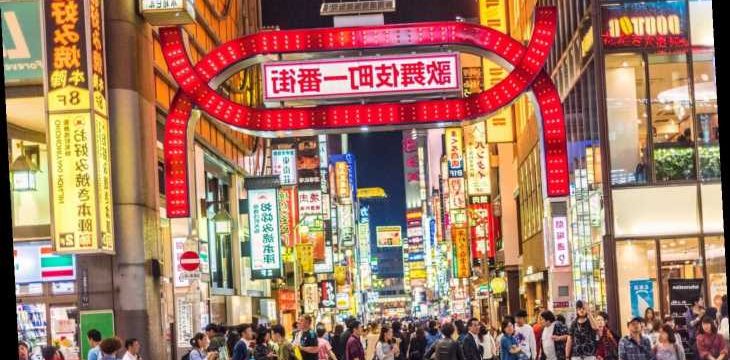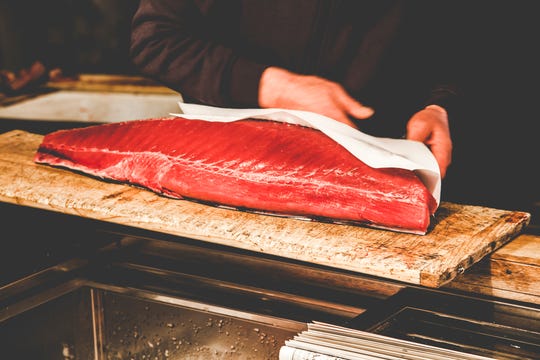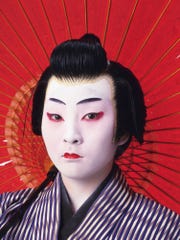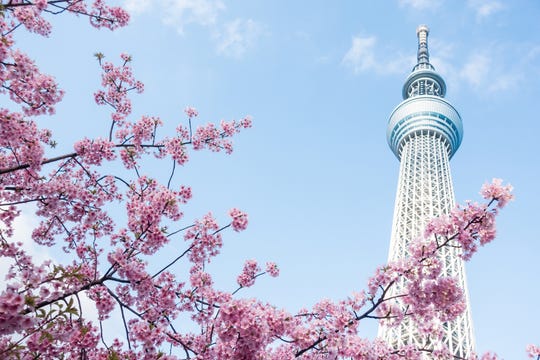It’s officially an Olympic year. With the 2020 Summer Olympics on the horizon, all eyes are on Tokyo. This fascinating megalopolis more than deserves your attention – and not just because it’s hosting the Games of the XXXII Olympiad. Towering skyscrapers, historic shrines, whimsical pop culture, spectacular entertainment, a fabled fish market, the biggest pedestrian crossing in the world.
Tokyo has so much going for it that you could easily spend a week and not even scratch the surface. If you only have a handful of days, narrowing it down can be daunting. Not to worry, we’re done the research and leg work to determine the best things to do in Japan’s exhilarating capital.
Venture to Toyosu Fish Market
The tuna action at the Toyosu Fish Market starts at 5:30 a.m. But don't count on seeing it unless you won a lottery spot or booked a tour in advance. (Photo: 35007, Getty Images/iStockphoto)
Tokyo’s legendary fish market, which recently moved from Tsukiji to Toyosu, should be one of your first stops. The infamous tuna action starts at 5:30 am. If you didn’t win a spot in the online lottery or coordinate a guided tour beforehand, that likely won’t be in the cards. However, you can still enjoy breakfast sushi. Plus, a few extra hours of sleep never hurts.
Check out the Mori Art Museum
if you haven’t had your fill of fantastic views, consider purchasing a combo ticket that includes access to Mori Tower in Roppongi Hills. (Photo: benoa, Getty Images/iStockphoto)
Located in the upscale Roppongi Hills complex, the Mori Art Museum displays frequently changing contemporary exhibitions in genres ranging from photography and video to fashion and design. Bonus: if you haven’t had your fill of fantastic views, consider purchasing a combo ticket that includes access to Mori Tower.
Visit the Meiji Shrine
In a place that serves a hefty helping of sensory overload, it’s nice to take a few moments to appreciate the tranquil beauty of Tokyo's most famous Shinto holy site, the Meiji Shrine. (Photo: KIMIMASA MAYAMA/EPA-EFE)
In a place that serves a hefty helping of sensory overload, it’s nice to take a few moments to appreciate the tranquil beauty of Tokyo’s most famous Shinto holy site. Dedicated to Emperor Meiji and Empress Shoken, the Meiji Shrine is tucked inside an urban forest. Visitors walk along winding paths and pass through towering torii gates before entering. It’s an idyllic setting for paying respect and participating in traditional Shinto rituals. Despite feeling miles away from the bustle of the city, the Meiji Shrine is a short walk from Harajuku and Shibuya Crossing, making it a cinch to knock those key sights off your list, too.
See a kabuki play
A full kabuki show consists of three to four acts, lasts nearly five hours, and costs upwards of $185. You can find single-act tickets at Kabukiza Theatre. (Photo: DAJ/Getty Images/amana images RF)
Kabuki is a classical form of Japanese theatre characterized by drama, dancing, music, costumes, and elaborate make-up. A full kabuki show consists of three to four acts, lasts nearly five hours, and costs upwards of $185. Travelers with limited time and budget can buy single act tickets at Tokyo’s main kabuki venue, Kabukiza Theatre, in Ginza.
Savor omakase sushi
President Barack Obama dined at Sukiyabashi Jiro with Japanese Prime Minister Shinzo Abe in April 2014. (Photo: CABINET PUBLIC RELATIONS OFFICE, AFP/Getty Images)
Tokyo is chock full of Michelin-starred sushi restaurants that specialize in omakase, a formal type of Japanese dining in which the chef selects the menu. Securing a seat at one of these world-renowned establishments isn’t an easy feat. Most are quite small with limited counter space and book out months in advance. Adding to the challenge, many don’t accept third-party reservations. Your best bet is to seek the assistance of your hotel concierge – the earlier, the better. Of course, not everything has the price tag or waitlist of Sukiyabashi Jiro, the subject of the 2011 documentary “Jiro Dreams of Sushi.” There’s plenty of excellent mid-tier omakase to be had, too.
Stay at a ryokan
HOSHINOYA Tokyo combines customary elements of the traditional ryokan with modern touches such as comfy mattresses, sumptuous sheets, and blackout shades. (Photo: HOSHINOYA Tokyo)
For those not familiar, a ryokan is a traditional Japanese inn that features tatami-matted rooms and onsen (hot spring baths). With serenity as the ultimate goal, guests typically exchange shoes for slippers and don yukata. After action-packed days exploring Tokyo, the zen of a ryokan is sure to be a welcome change of pace. That said, many western travelers aren’t ready to sleep on the floor. Thankfully, that’s not a problem at the HOSHINOYA Tokyo, which combines customary elements with modern touches such as comfy mattresses, sumptuous sheets, and black-out shades.
Go bar hopping in Golden Gai
Bars and club line the narrow alleyways in Tokyo's Shinjuku district. (Photo: agafapaperiapunta/Getty Images/iStockphoto)
Tokyo has numerous nightlife districts, but none compare to the off-beat appeal and retro quirkiness of Golden Gai. Snug izakayas (Japan’s answer to the pub) and drinking dens – some with only a few seats – line the narrow alleyways in this particularly buzzing part of Shinjuku. It’s a great place to mingle with locals and grab a drink or two. Pro tip: if you’re not keen on paying to enter, look for pubs with signs advertising “no cover charge.”
Experience the Robot Restaurant
It's kitschy and the food isn't great but a trip to the Robot Restaurant is something you’ll never forget. (Photo: Chris McGrath/Getty Images)
A crazy show with pop music, robots, dancers, and colorful lasers? That definitely qualifies as an only-in-Tokyo experience. Sure, it’s kitschy and the food isn’t great (we’d suggest eating at one of the nearby izakayas \ in Shinjuku beforehand), however a trip to the Robot Restaurant is something you’ll never forget.
Chowdown at an underground food hall
Katsu, or deep-fried cutlets of meat, is a staple of the Tokyo underground food hall scene. (Photo: waranya_photo/Getty Images/iStockphoto)
In Tokyo, and throughout most major cities in Japan, department stores aren’t just shopping emporiums, but rather mouth-watering dining destinations. Massive underground food halls, known as depachika, house a treasure trove of culinary delights – from golden, deep-fried katsu and Hokkaido uni to flawless seasonal fruit and wagashi (Japanese confections). Be sure to bring your appetite!
Admire the views from Tokyo Skytree
Rising 2,080 feet, Tokyo Skytree is the tallest structure in Japan. Buy tickets in advance if you want to check out the views from up there. (Photo: fannrei/Getty Images/iStockphoto)
Rising 2,080 feet, Tokyo Skytree is the tallest structure in Japan. The dual observation decks offer unobstructed panoramas of the city. Head to the Skytree Gallery to learn more about the features and interesting trivia associated with the tower. The lines tend to be long. Do yourself a favor and book tickets in advance.
Source: Read Full Article








